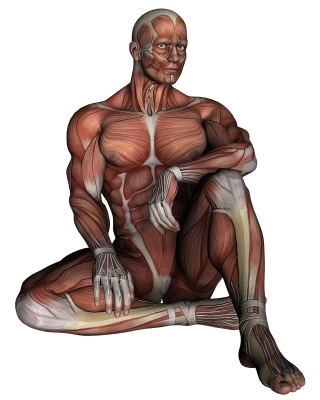Artificial Muscles Can Be Created from Ordinary Fishing Lines
Published on the journal Science, a study conducted by international researchers detailed how it is possible to create an artificial muscle using a fishing line and sewing thread. This artificial muscle is estimated to produce around a hundred times more power compared to what the ordinary human muscle can produce. The researchers also claim that its power output is greater than that of an automobile combustion engine’s.
There have been previous attempts to develop artificial muscles. These prior efforts mostly focused on materials such as nanotubes and metal wires. There have been interesting results in terms of the amount of power generated but nanotubes and metal wires prove to be difficult to manipulate. Additionally, they are expensive.
The fishing line artificial muscle is capable of producing 7.1 horsepower for every kilogram. This amount of power is comparable to what a jet engine generates. It is also worth noting that the material is light so it’s weight to power generation ratio is something very advantageous.
Creating the Fishing Line Artificial Muscle
The fishing line artificial muscle is created with a material technically referred to as a high strength polymer fiber made from polyethylene and nylon. This is essentially the same material used to produce fishing lines. To create the “muscle,” the polymer fiber is twisted and coiled. A device or implement for introducing heat to the twisted and coiled polymer fiber will then be needed to put the “muscle” to work.
If you want to observe how the setup appears and how it actually works, you can try creating your own model. Basically, you need to have a fishing line. Twist and coil it until you can come up with something that looks like a contracted spring. Apply heat to it and notice how it shrinks. Your heat source shouldn’t be too hot so you don’t melt the material. You can try a hair styling iron or a flat iron or that is about to cool down.
Obviously, what you will be making here is just something that will demonstrate how the tech works. You can’t expect to produce an actual muscle-powered device unless you have advanced robotics and engineering skills.
How It Works
According to Carter Haines, lead author of the paper that describes the new artificial muscle technology, the way this new tech works is similar to how the actual animal muscles work. The contraction and relaxing of the material creates movement that is capable of lifting or moving significant amounts of weight.
The polymer fiber coil (the artificial muscle) used in the study was noted to have contracted to up to 50%, which is more than the typical 20% contraction observed in real muscles. This means greater power and versatility.
Potential Applications
Artificial muscles are useful in various fields. The fishing line muscle recently reported by international researchers is expected to find more practical uses because of its advantages – mainly cheap production cost and better controllability. It is expected to yield benefits for the following:
-
Medical Robotics – The robots used in medical procedures need to be light, powerful, and more easily controllable – features that can possibly be delivered by the recently revealed artificial muscle.
-
Artificial Limbs – But of course – why should it be considered a muscle if it can’t augment the human muscular functions? The lightness and power of the “fishing line muscle” should be a big boon for amputees and those who need movable artificial extremities. The artificial limbs in current use are mostly centered on motors and hydraulic systems that carry a number of limitations. This development can push wearable technology beyond the software aspect.
-
Biomimetic Machines – These machines employ designs or structures that imitate how biological systems, the animal muscular system in particular, work and fulfill certain functions. Artificial muscles will certainly be useful in running these machines.
-
Industrial Actuators – Muscles that are capable of lifting humongous weights will definitely play major roles in industrial applications.
-
Futuristic Clothing – This may not sound like an immediate possibility but artificial muscles are bound to be used in clothes that can contract and expand to provide the wearer a proper or more comfortable fit. The lightness of polymer fiber as the main artificial muscle material makes it really suitable for this purpose.
Towards Transhumanism
A recent Huffington Post Tech blog discussed the idea of transhumanism and how people are likely to eventually open up to radical transhumanist technology in the future despite the skepticism. Transhumanism, broadly defined, is the idea of transcending the human body or the state of being utterly naturally human through science and technology. Transhumanists advocate the adoption of technologies that greatly enhance human capabilities and functions.
This recent development in artificial muscle technology is bound to benefit transhumanist goals. As soon as the “fishing line artificial muscle” gets perfected, transhumanist implements such as controllable exoskeletons and artificial limbs will definitely be improved. Operating them should become more efficient and they should already be made more compact and lightweight as they benefit from the inherently advantageous properties of the fishing line (polymer fiber) muscle material.
Isn’t it amazing how the simple fishing line can now be used in creating an artificial muscle? Indeed, technology is such a wonder. We wouldn’t be surprised to see an android built with polymer fiber (fishing line) muscles and moving like a real human in the near future.


